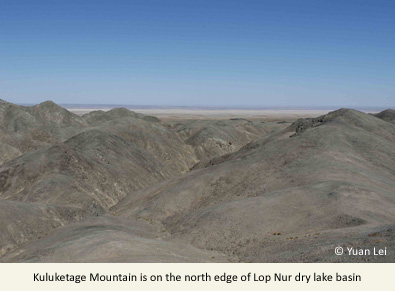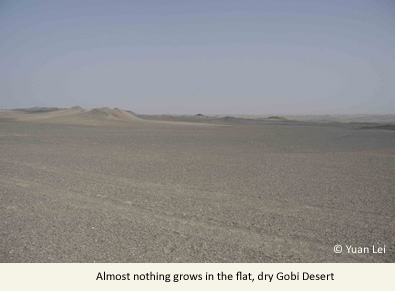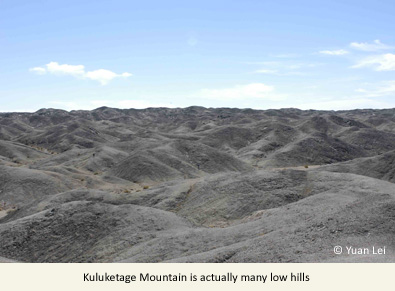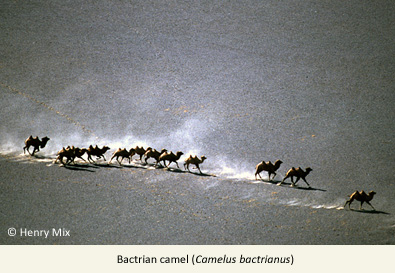Yuan Lei, one of two EDGE Fellows working on the wild Bactrian camel, tells us here about the environment he encountered during an observation trip in the barren north-east part of the Lop Nur Wild Camel National Nature Reserve.
On 6th April, I went into the reserve from Hami city with other four staff and a Toyota. The purpose is the environment investigation for water spring and vegetation. We spent 5 days in the reserve. And two days of them we stayed in the middle Lop Nur dry lake-basin. It is approximately 400km from Hami city to the middle Lop Nur dry lake-basin.

Between Hami city to the Lop Nur dry lake-basin, from north to south are Hami Oasis, Nanhu Gobi, Kuluketage mountain. Coming down from Kuluketage mountain is north edge of Lop Nur dry lake-basin.
Hami Oasis
Hami is a big city in the Xinjiang province. Population is over 400,000. Drinking water come from the Tianshan mountain which is high over then 4,000meter. Hami Oasis is most biggest city lie north east of the reserve.

Nanhu Gobi
Nanhu Gobi lies north east of the Lop Nor wild camel national nature reserve which is extremely rare dry flat desert. Whole of the desert is full of the small black stone and almost nothing grow on it. We found nothing when we cross this area. No plants, no water sprint, no any animals’ prints are in this area. This area is experiment zone of the reserve.

Kuluketage mountain
After Nanhu Gobi and continue to south, we went into Kuluketage mountain. So called mountain, in fact, is constitute by many low hills. This mountain also belongs to part of the Tianshan mountain. It is south Tianshan mountain. We could found vegetation grows along the valley of the mountain. But only some of the valley grow vegetation. Before we found a water point in this area. This time we went to see the water point again. But we found the water point is dry. Only gazelle’s foot prints had been found around the dry water point. Two years ago, we set a education board near this water print for education public and warning.
After five days, we finished our short time observation in north east of the reserve.
If you would like to support the work of Yuan Lei and other EDGE Fellows, who carry out vital research and conservation actions for unique and threatened species, please become an EDGE Champion or donate here.
